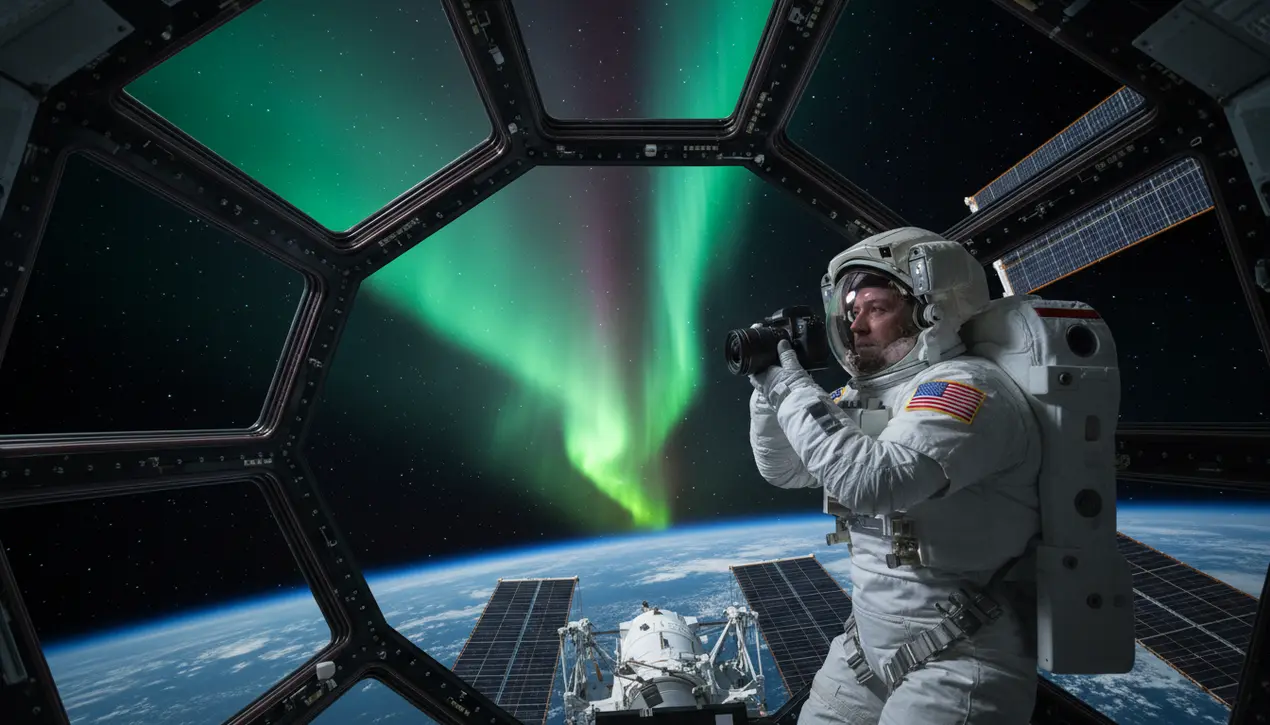
Sciencespace & astronomyNASA Missions
Astronaut Films Northern Lights from Space Station
TH
Thomas Green
47 minutes ago7 min read
From the unparalleled vantage point of the International Space Station, NASA astronaut Zena Cardman captured a celestial performance on November 17th that renders even the most vivid earthly descriptions inadequate—the Northern Lights, or aurora borealis, dancing in a silent, cosmic ballet. This isn't merely a pretty light show; it's a violent, beautiful collision between our planet and the sun, a fundamental physical process made visible.The footage, likely shot from the Cupola module's seven-window observatory, offers a perspective that transforms the phenomenon. From 400 kilometers above, the aurora isn't something you look up to see; it's a shimmering, living river you fly alongside, a thin, radiant green ribbon hugging the curvature of the Earth, with towering vertical structures that reveal its three-dimensional nature, something impossible to grasp from the ground.This event is driven by the solar wind, a constant stream of charged particles ejected from the sun, which travels across the 150 million-kilometer void until it meets Earth's magnetic field. This magnetic shield, our planet's first line of defense, funnels these particles toward the poles, where they slam into oxygen and nitrogen atoms in the upper atmosphere.Each collision is a tiny energy transfer: oxygen at high altitudes produces the rare red hue, while lower-altitude oxygen creates the iconic, brilliant green that Cardman filmed, and nitrogen contributes deep blue or crimson purples. For astronauts like Cardman, this is more than a photo opportunity; it's a stark reminder of our planet's fragility and its place in a dynamic solar system.The intensity of these displays is directly tied to solar activity, which follows an approximately 11-year cycle. We are currently approaching the solar maximum predicted for 2025, meaning the sun is more active, with more sunspots and coronal mass ejections, leading to more frequent and powerful auroral displays that can sometimes be seen at lower latitudes.Historically, major geomagnetic storms caused by such solar activity have had real-world consequences, from the 1859 Carrington Event that fried telegraph systems to modern concerns over GPS and power grid vulnerabilities. So, while Cardman's video is a breathtaking piece of scientific art, it is also a live feed from the front lines of a constant, invisible war between star and planet, a humbling glimpse of the forces that shape our space environment and a poignant indicator of the increasing solar storms we can expect in the coming years, a beautiful harbinger of potential technological disruption that underscores why agencies like NASA monitor our star so intently.
#featured
#NASA
#astronaut
#Northern Lights
#aurora borealis
#space
#Earth observation
Stay Informed. Act Smarter.
Get weekly highlights, major headlines, and expert insights — then put your knowledge to work in our live prediction markets.
Related News
Comments
Loading comments...
© 2025 Outpoll Service LTD. All rights reserved.